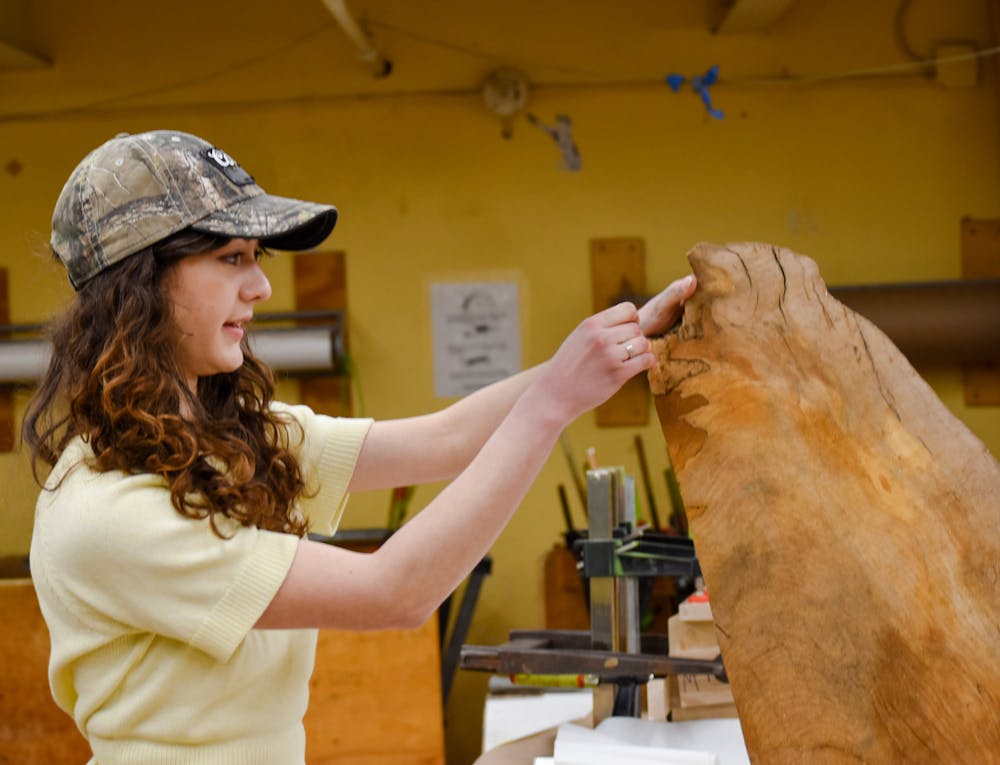As Brown was growing through the centuries, so was a beech tree on Power Street.
Cat Love, a senior at the Rhode Island School of Design studying furniture design, had always loved the European Beech, more than 200 years old, planted in the garden of Nightingale Brown House.
She passed it on her way to class her junior year, noticing the tree stretching well above the garden’s brick wall. But on a gray day in October 2021, Love was greeted by a crane and a lumbering team. A worker was strapped to the tree with a chainsaw, cutting it down branch by branch.
Love, in a car with a friend, did a lap around the block and passed by the scene again. During her gap year, she had spent much of her free time under that tree’s shade in the garden reading, writing or spending time with friends — “the perfect place,” she called it.
According to Ron Potvin, assistant director and curator at the John Nicholas Brown Center, the tree “was probably the oldest living organism on the grounds.” He recalled Brown students visiting the garden on sunny days, trying to scale “the very tempting climbing tree.”
Love got out of the car and asked the workers what they were doing. Someone on the team told her: the tree had a fungus and needed to be taken down.
“I was just so distraught and just so emotional about it,” Love said.
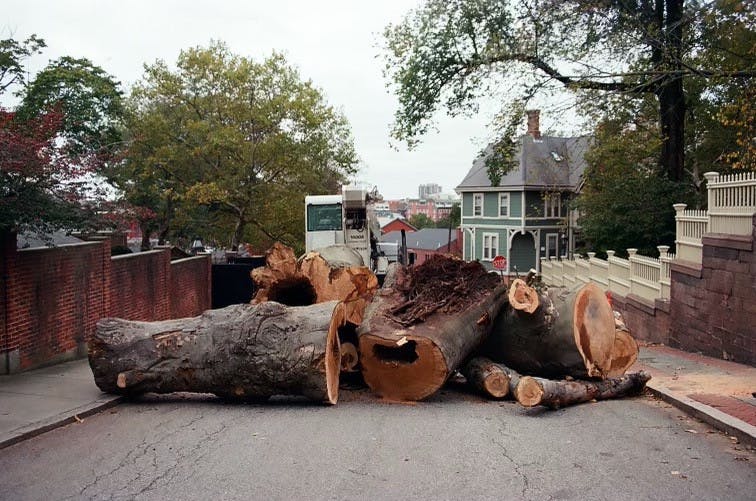
The Department of Facilities Management’s full-time arborist first discovered tree rot in the beginning of 2015, according to Paul Armas, assistant vice president of facilities operations. That August, a destructive thunderstorm brought wind gusts of nearly 70 miles per hour to Rhode Island, further damaging the centuries-old tree. The Grounds department in Facilities Management continued to monitor the tree’s declining health and eventually determined it should be removed “based on its condition and potential hazard to people and property,” Armas said.
Upon taking down the tree, Facilities arborists and Tree Tech, an outside company, discovered discoloration in the middle of the trunk. This meant that it likely had bleeding canker, a symptom of a fungal infection common in beech trees, said Carl Taylor, an arborist at Tree Tech.
And once bleeding canker or any infection takes root in a tree, it can be nearly impossible to cure. While treatments can help slow down its death, “it’s very difficult to help the tree a whole lot” when a disease gets a strong foothold, according to Heather Faubert, research associate at the University of Rhode Island’s Plant Protection Clinic.
“To see a really huge, living thing cut down … even if it is sick or dying and it’s technically what’s best, it’s really intense, especially if you love it,” Love said. And because of its size and rot, the tree was likely heading to a plant to be turned into mulch or paper pulp, according to Taylor, who was on site during the removal.
After hearing about plans for the tree, Love called Sarah Holloway, another senior studying furniture design at RISD. The pair spent the rest of the day traveling back and forth between the site and school, returning at least five times to check in with the removal team. A plan started to take form.
Holloway coordinated with the arborists from Tree Tech and Facilities Management to transport a large section of the tree to RISD’s furniture design studio on North Main Street. Then a RISD sculpture woodshop technician used a school forklift to move the one-ton piece, taken from a main limb of the tree, into the alley behind the shop.
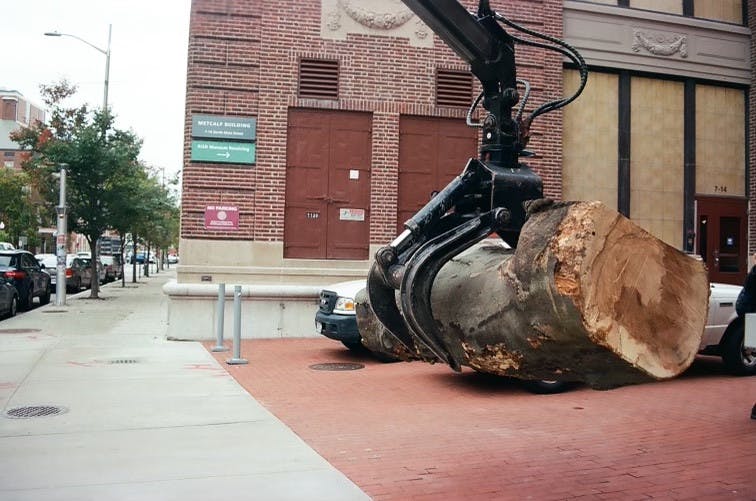
The eight feet-long, two foot-wide log sat in the alley for seven months, its ends covered in blue latex house paint so the wood could retain its moisture. Love said the log started to grow mushrooms.
Love and Holloway planned to get the log milled, hoping to use the wood in their craft.
While most furniture design majors use wood purchased from lumber yards, others like Love and Holloway often look in alternative places. Currently, Love is working with walnut husks collected from her grandmother’s house to use in her senior thesis, and Holloway is connected with a Providence-based arborist who occasionally provides her with leftover tree limbs after removals, she said.
The furniture design department also collaborates with the National Park Service in the Witness Tree Project, the basis for an interdisciplinary RISD course combining a history seminar and furniture studio. A witness tree is one that was present for significant historic, cultural or material events in American history, according to Dale Broholm, senior critic in RISD’s Department of Furniture Design and instructor of the class’s woodworking section. The department receives these trees from the National Park Service, and students develop historically relevant projects based on the tree’s context.
“I think it’s really valuable to understand where the wood comes from and what it means,” Broholm said, especially if it’s from a local source with ties to the community. “If you get the chance, through your object and through your work, to express that to your audience … it’s an opportunity for a broader conversation around trees.”
Wood is typically thought of as a commodity, Love said. But it is also a living thing — the Witness Tree project attempts to “connect people with where these resources are coming from.”
Even more impactful is when designers find the tree themselves or have a relationship with it — much like Love and Holloway’s connection with the beech tree. “It’s a really beautiful process,” Holloway said.
Before the tree was milled, there were “definitely some nerves,” Love said. As it sat exposed to the elements, the log’s interior could have been damaged or decaying. Another undesirable outcome, and something the pair’s professors prepared them for, was the possibility of cement inside the log.
“Old trees were sometimes repaired through cement, that was an arborist technique at one point,” Holloway explained. “So you never know when you’re milling the wood if you’re going to hit cement.”
In spring 2022, Love and Holloway enlisted eight other RISD students to raise enough cash to tow the tree to the R.I. Sawmill in Coventry.
The log sat in the sawmill’s wood pile for another five months. Then, at 8 a.m. on a rainy day in November, Love, Holloway and three others, wearing rain jackets and “jazzed on coffee,” watched the tree get milled into pieces, Love said.
“It was super exciting. I mean, it was nerve wracking,” she said. “We were just like, okay, maybe this will be terrible and horrible and we won’t be able to use any of (the wood).” But when they took off the top part of the log, “It was like kids on Christmas.”
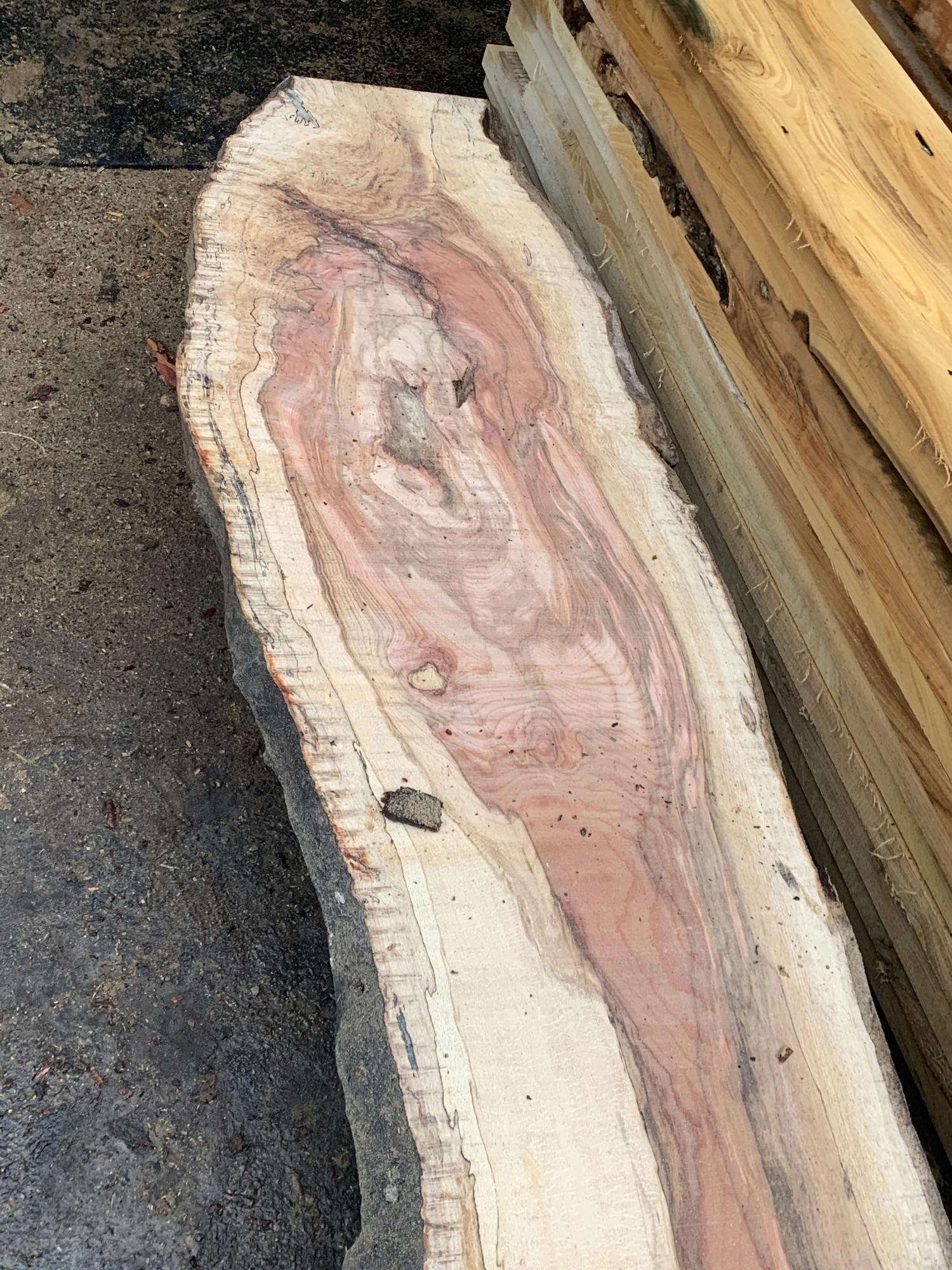
There was no cement or rot. Save for a slight crumble around the edges, there was only clean, soft wood with a pink center and black, jagged lines where spalting had occurred. Spalting appears when trees react to fungus, producing coloration in the wood.
“It’s one of these things where you can’t really factory-produce it,” Holloway said. “It’s something that just happens naturally, it’s the story of the tree.” Spalted wood not yet structurally damaged by rot is rare, and prized by furniture designers for its unique, striking patterns.
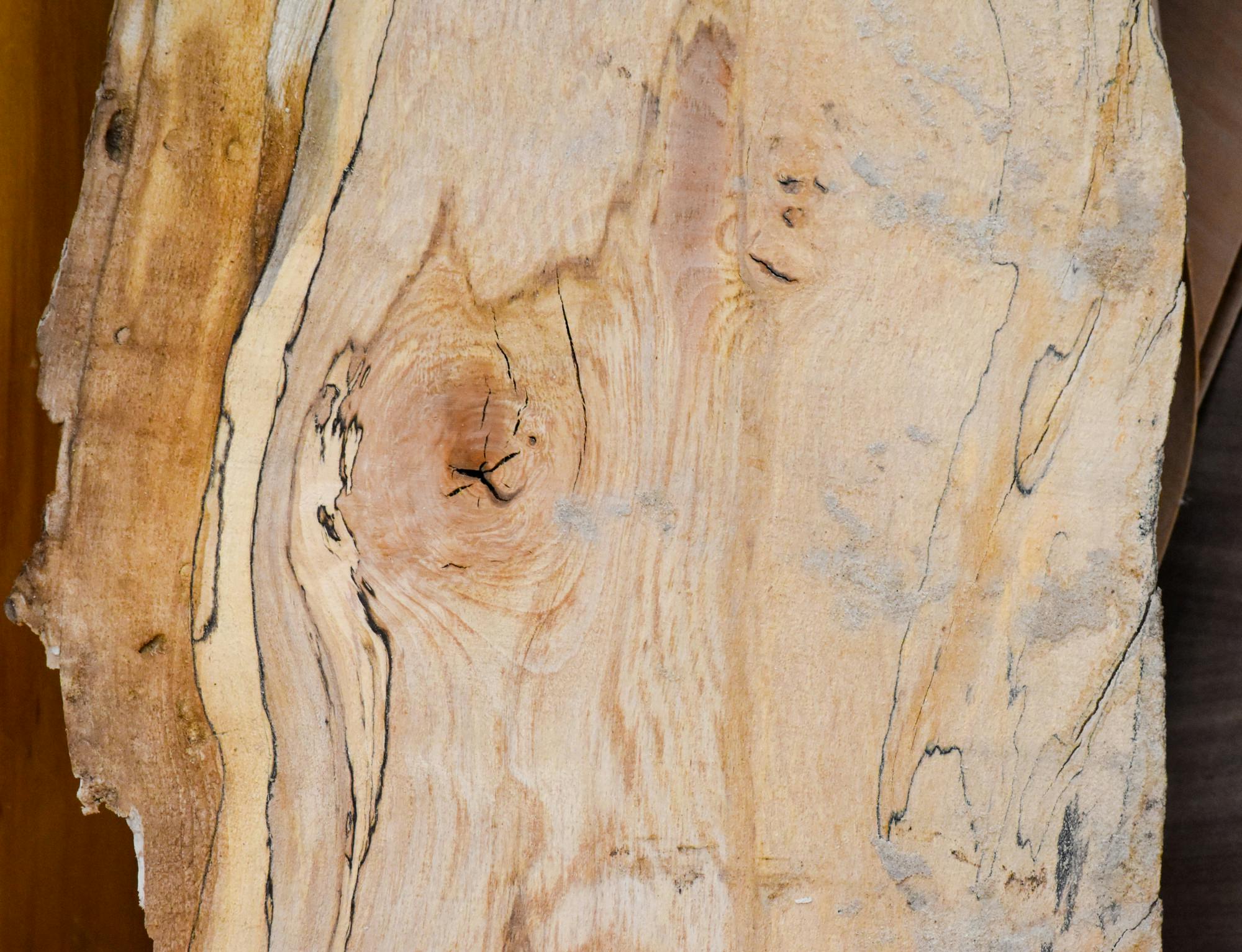
One of their friends drove the milled slabs back to RISD, where they are currently drying in storage. Removing the moisture can take up to two years for slabs like this, but there are ways to use the greenwood before it has completely dried, Love and Holloway said.
Holloway recently made a stool with the wood, a test piece to understand the material. “It’s like looking at a cave painting,” she said. The piece showcases the tree’s spalting, where the “decay solidified in the material.”
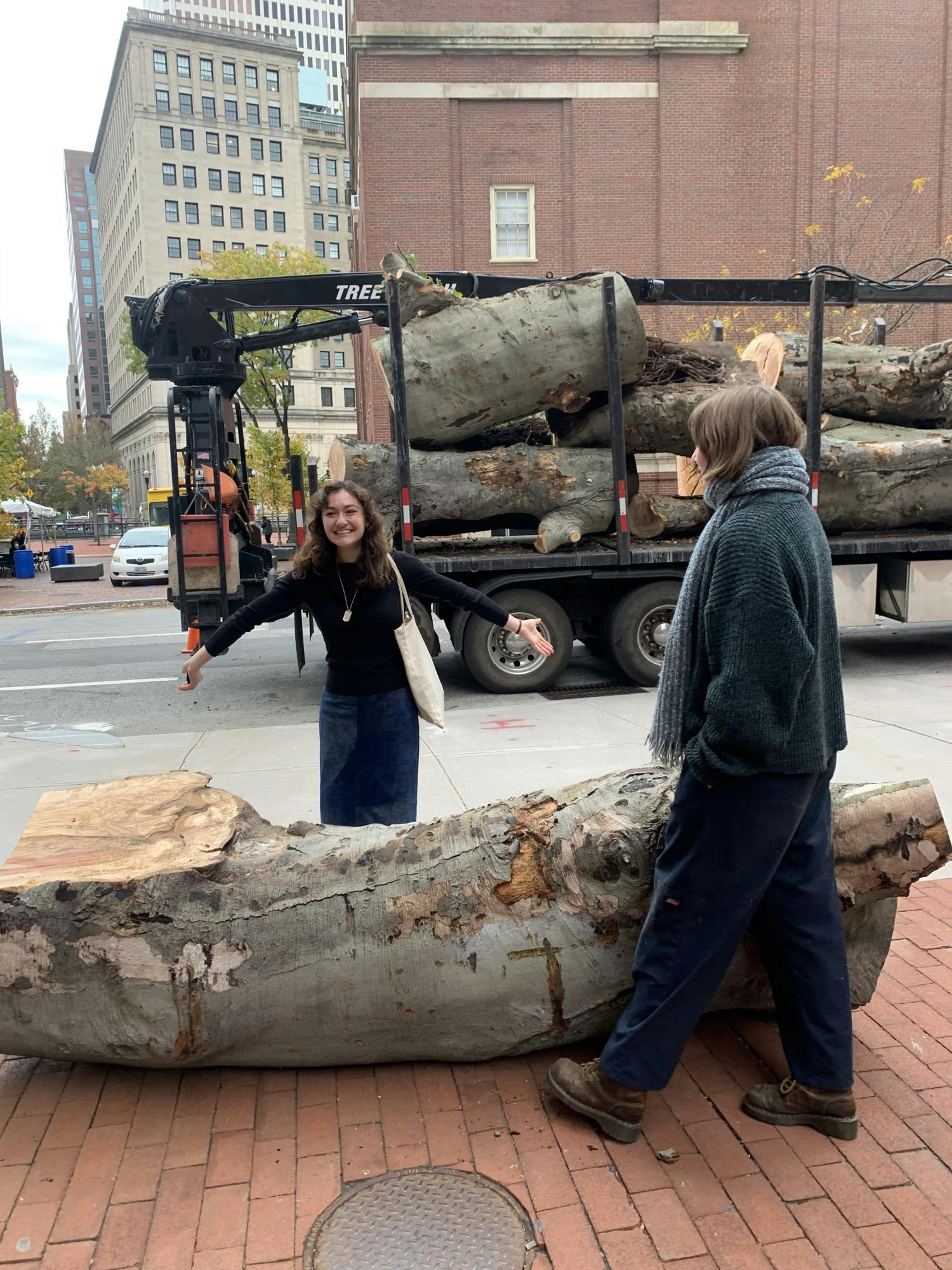
Courtesy of Cat Love
The log produced 13 slabs of wood, around 288 board-feet. 12 board-feet, Love said, can make a single chair. The wood — too much for two people to use — will be split up between students who chipped in to transport and mill the log, as well as anyone else who has a connection to Brown or the tree, Love said.
Both Love and Holloway told The Herald they now plan on using pieces of the tree in their theses before graduating. The pair will continue to work with the wood after graduation as well, potentially making a sink or countertop which would showcase the beech’s pink heartwood and spalting. Holloway called the whole process a “labor of love,” stemming from their desire to preserve a tree with such historic and emotional relevance.
“It feels like a big responsibility,” Love added. “You realize, ‘Oh, my hands did this.’ And now it has a life of its own again.”
Love said she recently read “Casting Deep Shade,” a book by the late Brown professor and Poet Laureate Carolyn D. Wright, which meditates on the poetic, personal and historical significance of beech trees. In the book, Love explained that Wright tracks the entire cosmology of one specific tree, demonstrating the importance of trees in understanding her life.
“Reading it really elucidated something for me. Trees are very important to me,” Love said. They’re “giant, ancient beings that connect us, house us, allow us to build things. They’re background characters for our lives and also allow us to stage our lives.” Love wondered if Wright had ever met the beech tree at Nightingale Brown house.
Love and Holloway still both frequently spend time in the garden. But it’s different without the beech tree. “It’s still lovely. I mean, you can definitely feel that a presence is gone,” Love said. “It feels like the balance is off in the garden.”
“It was there for scenery, for fun … to evoke the natural landscape that stands on that part of the property. The neighbors used the grounds here for relaxing … and brought their dogs by the tree,” Potvin said. “It was a notable tree, and it was a sad day when we had to take it down.”
Now, Love and Holloway are planning to return some of the wood to the space where the beech stood. They hope to make a bench — possibly commissioned by the John Nicholas Brown Center — to keep in the garden, alongside the sapling that now grows in the tree’s place.
Correction: A previous version of this story did not attribute one photo to Cat Love. The Herald regrets the error.
Haley Sandlow is a contributing editor covering science and research. She is a junior from Chicago, Illinois studying English and French.

Sofia Barnett is a University News editor overseeing the faculty and higher education beat. She is a junior from Texas studying history and English nonfiction and enjoys freelancing in her free time.

